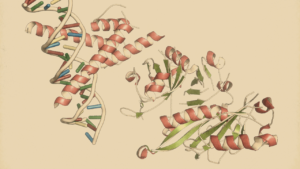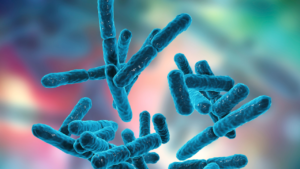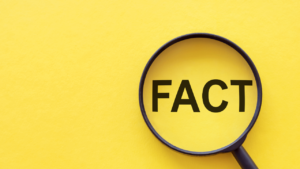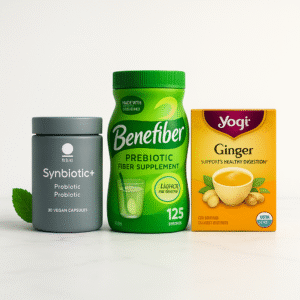Breaking the Rules: Science-Based Secrets of Food Intake Regulation
Discover the science-based secrets to controlling your appetite and achieving your health goals. Learn how to break the rules of food intake regulation today!

In This Article:
Key Points
- Gut microbiota communicates with our brains through bodily signals, influencing our food intake and cravings.
- Prebiotics can enrich our gut microbiome and reduce food intake.
- Short-chain fatty acids (SCFAs) produced by gut bacteria affect hormones related to appetite and glucose control.
- Certain bacteria, like Akkermansia muciniphila, can help ward off obesity and diabetes.
- Gut microbes can influence dopamine levels in the brain, affecting our cravings for fatty and sugary foods.
- Amino acids produced by gut microbes can be converted into neurotransmitters like serotonin and dopamine, which affect the brain's reward system.
- The vagus nerve acts as a communication superhighway between the gut and the brain, transmitting messages about feeling full or wanting more.
- Short-chain fatty acids encourage the release of gut peptides that make us feel full.
- The gut microbiota can modulate the endocannabinoid system, influencing our pleasure in eating fats.
- Inflammation caused by an unhealthy diet can negatively affect the gut-brain axis and our future eating behavior.
- Manipulating our gut bacteria could help manage eating behaviors and treat disorders related to food cravings and obesity.
Unlocking the Secrets of Appetite: How Our Gut Friends Influence What We Eat
Ever wondered why you crave certain foods?
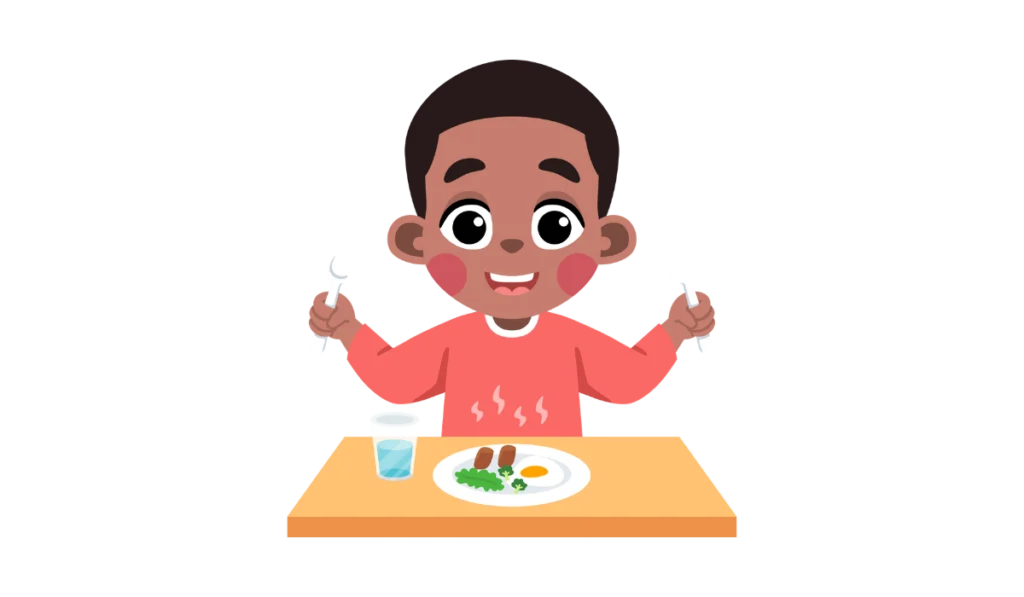
It turns out the trillions of tiny organisms living in our gut might hold the answers!
These microscopic residents—bacteria, viruses, and even fungi—don't just sit idle; they're actually in constant chatter with our brains.
The communication happens via bodily signals, traveling through nerves and blood A Trusted Source Delzenne, N. M., Neyrinck, A. M., Bäckhed, F., and Cani, P. D. (2011). Targeting gut microbiota in obesity: effects of prebiotics and probiotics. Nat. Rev. Endocrinol. 7, 639–646. doi: 10.1038/nrendo.2011.126 PubMed AbstractCrossRef Full TextGoogle Scholarvan de Wouw et al., 2017 A Trusted Source Cani, P. D., Van Hul, M., Lefort, C., Depommier, C., Rastelli, M., and Everard, A. (2019). Microbial regulation of organismal energy homeostasis. Nat. Metab. 1, 34–46. doi: 10.1038/s42255-018-0017-4 PubMed AbstractCrossRef Full TextGoogle Scholar.
A groundbreaking experiment in 2010 took a closer look at this phenomenon Vijay-Kumar et al., 2010. A Trusted Source Vijay-Kumar, M., Aitken, J. D., Carvalho, F. A., Cullender, T. C., Mwangi, S., Srinivasan, S., et al. (2010). Metabolic syndrome and altered gut microbiota in mice lacking Toll-like receptor 5. Science 328, 228–231.Google Scholar
Scientists discovered that when they transferred the gut contents from obese mice into others, the receiving mice started overeating, just like their donors!
This was a eureka moment, proving our gut buddies can influence how much we eat.
There's good news though! We can reshape our gut community with friendly microbes (also known as probiotics) or by feeding them special diets (prebiotics), and this can actually help us control our food cravings.
It's a fascinating new frontier where our diets and our microscopic partners work together to keep our eating habits in check.
Probiotic Supplements: Balance your gut health and manage your cravings with our range of probiotic supplements, designed to harmonize your gut microbiota.
The Role of Gut Microbiota in Food Intake Regulation
Have you ever thought about the intricate science behind what makes us feel full or hungry?
It's not just about willpower—our gut is having its own complex conversation that can influence our cravings and appetite.
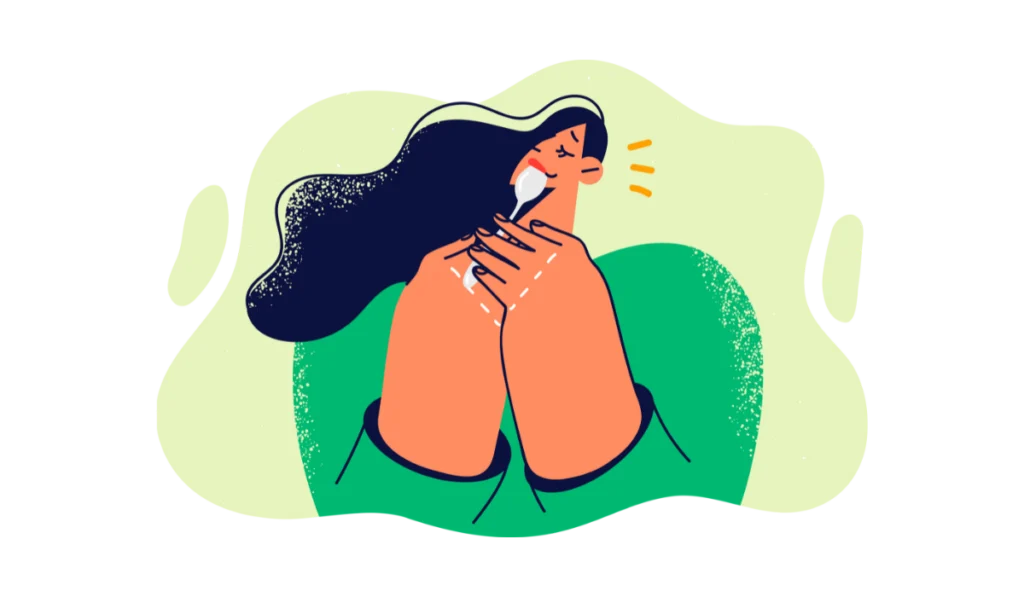
This dialogue involves some very special cells called enteroendocrine cells (EECs) and our gut microbiota—the community of microbes living in our digestive tract.
A Discovery From a World Without Microbes
Our journey begins with creatures raised in a germ-free environment.
Studies dating back to 1989 by Goodlad et al.revealed that these animals had higher levels of "enteroglucagon" and peptide YY (PYY), compared to their conventionally raised counterparts. A Trusted Source Goodlad, R. A., Ratcliffe, B., Fordham, J. P., Ghatei, M. A., Domin, J., Bloom, S. R., et al. (1989). Plasma enteroglucagon, gastrin and peptide Yy in conventional and germ-free rats refed with a fibre-free or fibre-supplemented diet. Q. J. Exp. Physiol. 74, 437–442. doi: 10.1113/expphysiol.1989.sp003291 PubMed AbstractCrossRef Full TextGoogle Scholar
Yet, a 2012 study by Duca et al.found that these gut hormones were actually present in lower amounts in certain parts of their intestines A Trusted Source Duca, F. A., Swartz, T. D., Sakar, Y., and Covasa, M. (2012). Increased oral detection, but decreased intestinal signaling for fats in mice lacking gut microbiota. PLoS One 7:e39748. doi: 10.1371/journal.pone.0039748 PubMed AbstractCrossRef Full TextGoogle Scholar.
This paradox hinted at a complex relationship between our gut cells and their microbial companions.
The Invisible Communicators: Dietary Fibers and SCFAs
We often hear about the benefits of dietary fibers, but it's not just because they're challenging to digest.
These fibers are a feast for our gut bacteria, which in turn produce short-chain fatty acids (SCFAs) like acetate, butyrate, and propionate.
These SCFAs are not just waste products; they are chemical messengers that speak directly to our EECs.
As shown in research by Wichmann et al.in 2013, certain gut bacteria that produce SCFAs can significantly influence the presence of GLP-1, a hormone related to appetite and glucose control A Trusted Source Wichmann, A., Allahyar, A., Greiner, T. U., Plovier, H., Lunden, G. O., Larsson, T., et al. (2013). Microbial modulation of energy availability in the colon regulates intestinal transit. Cell Host Microbe 14, 582–590. doi: 10.1016/j.chom.2013.09.012 PubMed AbstractCrossRef Full TextGoogle Scholar .
Prebiotics: A Helping Hand to Our Gut Flora
The plot thickens when we introduce prebiotics into the mix.
These are special types of dietary fibers that favor the growth of beneficial bacteria.
Over two decades, our laboratory has seen that enriching diets with prebiotics like inulin can change the gut microbiome and reduce food intake.
It's fascinating how these prebiotics can lead to more GLP-1 and PYY in the blood, as demonstrated in studies by Cani et al. and Delzenne et al. between 2000 and 2006 A Trusted Source Cani, P. D., Dewever, C., and Delzenne, N. M. (2004). Inulin-type fructans modulate gastrointestinal peptides involved in appetite regulation (glucagon-like peptide-1 and ghrelin) in rats. Br. J. Nutr. 92, 521–526. doi: 10.1079/BJN20041225 PubMed AbstractCrossRef Full TextGoogle Scholar .
The Role of SCFAs Beyond the Gut
These SCFAs have talents beyond the gut.
They travel through the bloodstream, potentially influencing distant organs, including the brain.
This idea is supported by research from Frost et al. in 2014 and Canfora et al. in 2015, who suggest that these fatty acids can even sway our brain's control over appetite A Trusted Source Frost, G., Sleeth, M. L., Sahuri-Arisoylu, M., Lizarbe, B., Cerdan, S., Brody, L., et al. (2014). The short-chain fatty acid acetate reduces appetite via a central homeostatic mechanism. Nat. Commun. 5:3611. doi: 10.1038/ncomms4611 PubMed AbstractCrossRef Full TextGoogle Scholar A Trusted Source Canfora, E. E., Jocken, J. W., and Blaak, E. E. (2015). Short-chain fatty acids in control of body weight and insulin sensitivity. Nat. Rev. Endocrinol. 11, 577–591. doi: 10.1038/nrendo.2015.128 PubMed AbstractCrossRef Full TextGoogle Scholar .
A Unique Bacterium: Akkermansia muciniphila
There's a bacterial superstar in our gut – Akkermansia muciniphila.
Studies led by Everard and colleagues between 2011 and 2013 found that this bacterium flourishes with prebiotic diets A Trusted Source Everard, A., Belzer, C., Geurts, L., Ouwerkerk, J. P., Druart, C., Bindels, L. B., et al. (2013). Cross-talk between Akkermansia muciniphila and intestinal epithelium controls diet-induced obesity. Proc. Natl. Acad. Sci. U.S.A. 110, 9066–9071. doi: 10.1073/pnas.1219451110 PubMed AbstractCrossRef Full TextGoogle Scholar.
and may ward off obesity and diabetes by increasing GLP-1 production through its own production of SCFAs.
Prebiotic Foods and Supplements: Enhance your gut health and naturally control your appetite with our selection of prebiotic foods and supplements, promoting beneficial gut bacteria growth.
The Endocannabinoid System: A Bridge Between Gut and Appetite
Moving beyond SCFAs, our gut bacteria can also influence the endocannabinoid system, a complex network that plays a role in food intake and energy balance.
A.muciniphila has been found to increase levels of endocannabinoid-related lipids, which can trigger the release of appetite-controlling hormones A Trusted Source Depommier, C., Everard, A., Druart, C., Maiter, D., Thissen, J. P., Loumaye, A., et al. (2021). Serum metabolite profiling yields insights into health promoting effect of A. muciniphila in human volunteers with a metabolic syndrome. Gut Microbes 13:1994270. doi: 10.1080/19490976.2021.1994270 PubMed AbstractCrossRef Full TextGoogle Scholar.
Lipopolysaccharide: A Double-Edged Sword
While our gut barrier is usually a great gatekeeper, when compromised, it can let through substances like lipopolysaccharide (LPS), which may contribute to inflammation and changes in food intake.
Interestingly, LPS can also promote the secretion of GLP-1 from our gut cells, as noted by Lebrun et al.
in 2017 A Trusted Source Lebrun, L. J., Lenaerts, K., Kiers, D., Pais De Barros, J. P., Le Guern, N., Plesnik, J., et al. (2017). Enteroendocrine L Cells Sense Lps after Gut Barrier Injury to Enhance Glp-1 Secretion. Cell Rep. 21, 1160–1168. doi: 10.1016/j.celrep.2017.10.008PubMed AbstractCrossRef Full TextGoogle Scholar
.
Bacterial Proteins: Remote Control Over Hunger?
Certain proteins produced by gut bacteria, like the caseinolytic peptidase B (ClpB) from E.coli, can mimic hunger-regulating hormones and influence our appetite, as shown in studies like Tennoune et al.
in 2014 A Trusted Source Tennoune, N., Chan, P., Breton, J., Legrand, R., Chabane, Y. N., Akkermann, K., et al. (2014). Bacterial ClpB heat-shock protein, an antigen-mimetic of the anorexigenic peptide alpha-Msh, at the origin of eating disorders. Transl. Psychiatry 4:e458. doi: 10.1038/tp.2014.98 PubMed AbstractCrossRef Full TextGoogle Scholar .
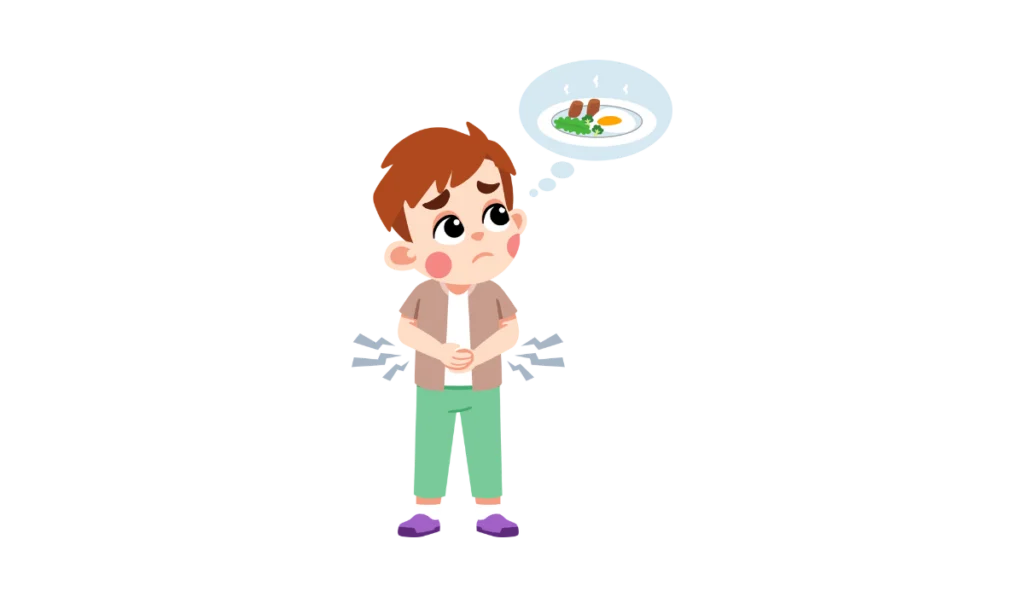
Wrapping It Up
In essence, the microorganisms living in our intestines are more than passive inhabitants; they're active participants in our health and behavior, particularly in how we regulate our food intake.
Understanding this intricate dance between our gut bacteria, the molecules they produce, and our body's cells opens up new horizons for tackling issues like obesity and diabetes.
By harnessing the power of these tiny allies, we could potentially steer our health in better directions.
Deciphering the Gut's Role in Regulating Our Eating Desires
In the fascinating dance of body processes that govern why we eat what we eat, a compelling performance is happening deep within us.
The trillions of microorganisms residing in our guts—collectively known as the gut microbiota—play a starring role in shaping our cravings and consumption patterns.
This is especially evident when we look at the non-homeostatic food intake, which refers to eating driven not by hunger but by other factors such as pleasure or stress.
The Gut-Brain Dopamine Dialogue
At the core of this appetite orchestra is dopamine, a neurotransmitter that's synonymous with the reward feelings we get from food.
Groundbreaking research has uncovered that our gut microbiota directly influence the dopamine levels in the brain.
Studies on mice without gut bacteria (germ-free or GF mice) reveal an increased turnover of dopamine synthesis in the striatum—a brain area linked with reward processing—compared to mice with a typical gut microbiome A Trusted Source Desbonnet, L., Clarke, G., Traplin, A., O’sullivan, O., Crispie, F., Moloney, R. D., et al. (2015). Gut microbiota depletion from early adolescence in mice: implications for brain and behaviour. Brain Behav. Immun. 48, 165–173. doi: 10.1016/j.bbi.2015.04.004 PubMed AbstractCrossRef Full TextGoogle Scholar.
This disruption in the gut flora has tangible effects on behavior, notably in how mice perceive and consume fats and sugars A Trusted Source Swartz, T. D., Duca, F. A., De Wouters, T., Sakar, Y., and Covasa, M. (2012). Up-regulation of intestinal type 1 taste receptor 3 and sodium glucose luminal transporter-1 expression and increased sucrose intake in mice lacking gut microbiota. Br. J. Nutr. 107, 621–630. doi: 10.1017/S0007114511003412 PubMed AbstractCrossRef Full TextGoogle Scholar.
Research led by de Wouters d’Oplinter et al.(2021) took this further by showing that lean mice with altered gut bacteria due to antibiotics indulged more in high-fat, high-sugar diets A Trusted Source de Wouters d’Oplinter, A., Rastelli, M., Van Hul, M., Delzenne, N. M., Cani, P. D., and Everard, A. (2021). Gut microbes participate in food preference alterations during obesity. Gut Microbes 13:1959242. doi: 10.1080/19490976.2021.1959242 PubMed AbstractCrossRef Full TextGoogle Scholar .
Remarkably, transplanting the gut microbiota from obese mice to lean ones led the recipients to replicate the donors' lessened interest in palatable food, alongside displaying similar dopamine-related changes seen in obesity.
Amino Acids: Building Blocks of Desire
The gut microbiota also modulates our cravings through amino acids, the building blocks of proteins.
These compounds can be converted into neurotransmitters like serotonin and dopamine, which are integral to the brain's reward system A Trusted Source Strandwitz, P. (2018). Neurotransmitter modulation by the gut microbiota. Brain Res. 1693, 128–133.Google Scholar.
Notably, gut microbes have been shown to boost the production of serotonin from tryptophan A Trusted Source Reigstad, C. S., Salmonson, C. E., Rainey, J. F. III, Szurszewski, J. H., Linden, D. R., Sonnenburg, J. L., et al. (2015). Gut microbes promote colonic serotonin production through an effect of short-chain fatty acids on enterochromaffin cells. FASEB J. 29, 1395–1403. doi: 10.1096/fj.14-259598 PubMed AbstractCrossRef Full TextGoogle Scholar.
However, it's not just the production that's interesting—it's the effect.
Tryptophan, for instance, has been found to decrease the intake of palatable food in mice A Trusted Source Gartner, S. N., Aidney, F., Klockars, A., Prosser, C., Carpenter, E. A., Isgrove, K., et al. (2018). Intragastric preloads of l-tryptophan reduce ingestive behavior via oxytocinergic neural mechanisms in male mice. Appetite 125, 278–286. doi: 10.1016/j.appet.2018.02.015 PubMed AbstractCrossRef Full TextGoogle Scholar.
Large-scale clinical studies like those conducted by Dong et al.(2022) provide human-based evidence linking the gut microbiota with reward system alterations in obesity A Trusted Source Dong, T. S., Guan, M., Mayer, E. A., Stains, J., Liu, C., Vora, P., et al. (2022). Obesity is associated with a distinct brain-gut microbiome signature that connects Prevotella and Bacteroides to the brain’s reward center. Gut Microbes 14:2051999. doi: 10.1080/19490976.2022.2051999 PubMed AbstractCrossRef Full TextGoogle Scholar .
These studies point out that people with higher body weight tend to have a different gut bacterial composition, which correlates with changes in the brain's reward areas and levels of amino acids like tryptophan.

Vagus Nerve: The Information Superhighway
The vagus nerve acts as a superhighway between the gut and the brain, transmitting signals that can influence our inclination toward rewarding foods.
Researchers have suggested that gut microbes may send their messages along this nerve,
though more evidence is needed to confirm this Han et al., 2018b A Trusted Source Egerod, K. L., Petersen, N., Timshel, P. N., Rekling, J. C., Wang, Y., Liu, Q., et al. (2018). Profiling of G protein-coupled receptors in vagal afferents reveals novel gut-to-brain sensing mechanisms. Mol. Metab. 12, 62–75. doi: 10.1016/j.molmet.2018.03.016 PubMed AbstractCrossRef Full TextGoogle Scholar A Trusted Source Cook, T. M., Gavini, C. K., Jesse, J., Aubert, G., Gornick, E., Bonomo, R., et al. (2021). Vagal neuron expression of the microbiota-derived metabolite receptor, free fatty acid receptor (Ffar3), is necessary for normal feeding behavior. Mol. Metab. 54:101350. doi: 10.1016/j.molmet.2021.101350 PubMed AbstractCrossRef Full TextGoogle Scholar.
Glucagon-like Peptide-1: A Double Agent in Satiety and Pleasure
Short-chain fatty acids (SCFAs), byproducts of the gut microbiota, are known to encourage the release of gut peptides like GLP-1, which make us feel full.
Interestingly, GLP-1 also plays a part in the brain's reward areas A Trusted Source Alhadeff, A. L., Rupprecht, L. E., and Hayes, M. R. (2012). GLP-1 neurons in the nucleus of the solitary tract project directly to the ventral tegmental area and nucleus accumbens to control for food intake. Endocrinology 153, 647–658. doi: 10.1210/en.2011-1443 PubMed AbstractCrossRef Full TextGoogle Scholar A Trusted Source Decarie-Spain, L., and Kanoski, S. E. (2021). Ghrelin and Glucagon-Like Peptide-1: a Gut-Brain Axis Battle for Food Reward. Nutrients 13:977. doi: 10.3390/nu13030977 PubMed AbstractCrossRef Full TextGoogle Scholar .
This hormone-like substance can decrease the intake of sugar and fat, and this action is believed to be through dampening the dopamine signaling in the brain's reward areas A Trusted Source Konanur, V. R., Hsu, T. M., Kanoski, S. E., Hayes, M. R., and Roitman, M. F. (2020). Phasic dopamine responses to a food-predictive cue are suppressed by the glucagon-like peptide-1 receptor agonist Exendin-4. Physiol. Behav. 215:112771. doi: 10.1016/j.physbeh.2019.112771 PubMed AbstractCrossRef Full TextGoogle Scholar.
Short Chain Fatty Acids: More Than Just Energy
Separately, SCFAs, especially propionate, may directly influence our brain's response to tempting foods without the involvement of GLP-1 or PYY, another satiety hormone.
This was observed in a clinical study where participants showed reduced brain activity in response to high-energy foods after receiving propionate A Trusted Source Byrne, C. S., Chambers, E. S., Alhabeeb, H., Chhina, N., Morrison, D. J., Preston, T., et al. (2016). Increased colonic propionate reduces anticipatory reward responses in the human striatum to high-energy foods. Am. J. Clin. Nutr. 104, 5–14. doi: 10.3945/ajcn.115.126706 PubMed AbstractCrossRef Full TextGoogle Scholar.
Endocannabinoids: The Gut's Pleasure Molecules
The endocannabinoid system, which includes the well-known CB1 and CB2 receptors, plays a part in how much we enjoy eating fats.
The gut microbiota can modulate this system, influencing our pleasure in eating through compounds like endocannabinoids and related lipids A Trusted Source Manca, C., Boubertakh, B., Leblanc, N., Deschenes, T., Lacroix, S., Martin, C., et al. (2020a). Germ-free mice exhibit profound gut microbiota-dependent alterations of intestinal endocannabinoidome signaling. J. Lipid. Res. 61, 70–85. doi: 10.1194/jlr.RA119000424 PubMed AbstractCrossRef Full TextGoogle Scholar A Trusted Source Manca, C., Shen, M., Boubertakh, B., Martin, C., Flamand, N., Silvestri, C., et al. (2020b). Alterations of brain endocannabinoidome signaling in germ-free mice. Biochim. Biophys. Acta Mol. Cell Biol. Lipids 1865:158786. doi: 10.1016/j.bbalip.2020.158786 PubMed AbstractCrossRef Full TextGoogle Scholar .
Inflammation: When Good Foods Turn Bad
An unhealthy diet can lead to inflammation, which in turn can negatively affect the gut-brain axis and subsequently our food choices.
This suggests that the inflammatory responses linked to diet can influence our future eating behavior, possibly by modulating the gut microbiota and altering neurotransmitter levels.
Final Morsel
The gut microbiota are indeed conductors of our dietary desires, with the power to both respond to and shape our eating behaviors.
They do this through complex interactions involving neurotransmitters, gut hormones, the vagus nerve, inflammation, and the endocannabinoid system.
The realization that these microorganisms could be leveraged to manage eating disorders and obesity presents a future rich with potential for novel therapies and interventions.
Understanding and modulating this internal symphony may be key to unlocking healthier eating habits and better overall health.
How Your Gut Influences Your Eating Habits
It turns out, that the trillions of tiny inhabitants in our gut, known as gut microbiota, have a surprisingly big say in what we crave and eat.
They're not just passive bystanders; they actively participate in the conversation about food intake regulation.
Dopamine, a "feel-good" neurotransmitter, is a key player in this interaction.
The microbiota affects how much dopamine gets to our brains, thereby influencing our desire for fatty and sugary foods A Trusted Source Crumeyrolle-Arias, M., Jaglin, M., Bruneau, A., Vancassel, S., Cardona, A., Dauge, V., et al. (2014). Absence of the gut microbiota enhances anxiety-like behavior and neuroendocrine response to acute stress in rats. Psychoneuroendocrinology 42, 207–217. doi: 10.1016/j.psyneuen.2014.01.014 PubMed AbstractCrossRef Full TextGoogle Scholar A Trusted Source Desbonnet, L., Clarke, G., Traplin, A., O’sullivan, O., Crispie, F., Moloney, R. D., et al. (2015). Gut microbiota depletion from early adolescence in mice: implications for brain and behaviour. Brain Behav. Immun. 48, 165–173. doi: 10.1016/j.bbi.2015.04.004 PubMed AbstractCrossRef Full TextGoogle Scholar.
It’s like having a friend in your gut nudging you towards or away from that extra slice of cake.
Even more fascinating is the role of amino acids, the building blocks of proteins, which are also transformed by gut microbes into signals like serotonin, further affecting our food choices A Trusted Source Strandwitz, P. (2018). Neurotransmitter modulation by the gut microbiota. Brain Res. 1693, 128–133.Google Scholar A Trusted Source Reigstad, C. S., Salmonson, C. E., Rainey, J. F. III, Szurszewski, J. H., Linden, D. R., Sonnenburg, J. L., et al. (2015). Gut microbes promote colonic serotonin production through an effect of short-chain fatty acids on enterochromaffin cells. FASEB J. 29, 1395–1403. doi: 10.1096/fj.14-259598 PubMed AbstractCrossRef Full TextGoogle Scholar.
It's a bit like the microbes are chefs, deciding whether to spice up our cravings or tone them down.
The vagus nerve is another key player, acting as a communication superhighway between the gut and the brain A Trusted Source Han, W., Tellez, L. A., Perkins, M. H., Perez, I. O., Qu, T., Ferreira, J., et al. (2018b). A Neural Circuit for Gut-Induced Reward. Cell 175, 665–678.e23. doi: 10.1016/j.cell.2018.08.049 PubMed AbstractCrossRef Full TextGoogle Scholar A Trusted Source Egerod, K. L., Petersen, N., Timshel, P. N., Rekling, J. C., Wang, Y., Liu, Q., et al. (2018). Profiling of G protein-coupled receptors in vagal afferents reveals novel gut-to-brain sensing mechanisms. Mol. Metab. 12, 62–75. doi: 10.1016/j.molmet.2018.03.016 PubMed AbstractCrossRef Full TextGoogle Scholar.
This nerve helps transmit the gut's messages, which can be about feeling full or wanting more.
Short-chain fatty acids (SCFAs) are also important.
They're produced by gut microbes and influence our feeling of fullness, as well as our interest in high-calorie foods, without us even realizing it A Trusted Source Byrne, C. S., Chambers, E. S., Alhabeeb, H., Chhina, N., Morrison, D. J., Preston, T., et al. (2016). Increased colonic propionate reduces anticipatory reward responses in the human striatum to high-energy foods. Am. J. Clin. Nutr. 104, 5–14. doi: 10.3945/ajcn.115.126706 PubMed AbstractCrossRef Full TextGoogle Scholar.
Then there's the gut's own pleasure molecules, the endocannabinoids, which can make eating fats feel more rewarding.
These molecules can shift our preferences, subtly pushing us towards different food choices A Trusted Source Manca, C., Boubertakh, B., Leblanc, N., Deschenes, T., Lacroix, S., Martin, C., et al. (2020a). Germ-free mice exhibit profound gut microbiota-dependent alterations of intestinal endocannabinoidome signaling. J. Lipid. Res. 61, 70–85. doi: 10.1194/jlr.RA119000424 PubMed AbstractCrossRef Full TextGoogle Scholar A Trusted Source Manca, C., Shen, M., Boubertakh, B., Martin, C., Flamand, N., Silvestri, C., et al. (2020b). Alterations of brain endocannabinoidome signaling in germ-free mice. Biochim. Biophys. Acta Mol. Cell Biol. Lipids 1865:158786. doi: 10.1016/j.bbalip.2020.158786 PubMed AbstractCrossRef Full TextGoogle Scholar .
However, when our diet leads to inflammation, it can mess up this whole communication system, potentially leading us to make poorer food choices.
In light of these insights, it's becoming clear that manipulating our gut bacteria could help manage eating behaviors, especially in disorders like binge eating A Trusted Source Aguera, Z., Lozano-Madrid, M., Mallorqui-Bague, N., Jimenez-Murcia, S., Menchon, J. M., and Fernandez-Aranda, F. (2021). A review of binge eating disorder and obesity. Neuropsychiatr 35, 57–67. doi: 10.1007/s40211-020-00346-w PubMed AbstractCrossRef Full TextGoogle Scholar.
Studies have found connections between certain bacteria like Bifidobacterium infantis and the way our brain processes rewards A Trusted Source Desbonnet, L., Garrett, L., Clarke, G., Bienenstock, J., and Dinan, T. G. (2008). The probiotic Bifidobacteria infantis: an assessment of potential antidepressant properties in the rat. J. Psychiatr. Res. 43, 164–174. doi: 10.1016/j.jpsychires.2008.03.009 PubMed AbstractCrossRef Full TextGoogle Scholar.
Moreover, altering the gut microbiota composition with prebiotics could be another way to influence our eating habits, but more research is needed to understand these complex interactions fully A Trusted Source Delbes, A. S., Castel, J., Denis, R. G. P., Morel, C., Quinones, M., Everard, A., et al. (2018). Prebiotics supplementation impact on the reinforcing and motivational aspect of feeding. Front. Endocrinol. 9:273. doi: 10.3389/fendo.2018.00273 PubMed AbstractCrossRef Full TextGoogle Scholar A Trusted Source Bernard, A., Ancel, D., Neyrinck, A. M., Dastugue, A., Bindels, L. B., Delzenne, N. M., et al. (2019). A preventive prebiotic supplementation improves the sweet taste perception in diet-induced obese mice. Nutrients 11:549. doi: 10.3390/nu11030549 PubMed AbstractCrossRef Full TextGoogle Scholar.
In sum, our gut microbes play a significant role in food intake regulation and could be key in treating disorders related to food cravings and obesity.
Understanding and harnessing these gut signals opens a door to potentially transformative treatments for our eating habits.
Books on Gut Health and Diet Management: Explore the intricate relationship between gut health and eating behaviors with our informative books, providing insights into effective diet management strategies.
Discussion and Conclusion
- Gut microbiota, including bacteria, viruses, and fungi, communicate with our brains through bodily signals, influencing our food cravings and appetite.
- Reshaping our gut community with probiotics or prebiotic diets can help control food cravings and regulate eating habits.
- Short-chain fatty acids (SCFAs) produced by gut bacteria play a role in regulating appetite and glucose control.
- Prebiotics, such as dietary fibers, can enrich the gut microbiome and reduce food intake by promoting the growth of beneficial bacteria.
- Certain bacteria, like Akkermansia muciniphila, can help prevent obesity and diabetes.
- Gut microbes can influence dopamine levels in the brain, affecting our cravings for fatty and sugary foods.
- Amino acids produced by gut microbes can be converted into neurotransmitters that impact the brain's reward system.
- The vagus nerve acts as a communication pathway between the gut and the brain, transmitting signals related to feelings of fullness or cravings for rewarding foods.
- Short-chain fatty acids encourage the release of gut peptides that promote feelings of fullness.
- Manipulating the gut microbiota could potentially help manage eating behaviors and treat disorders related to food cravings and obesity.
Review date not set.
How we reviewed this article:
Latest on:
